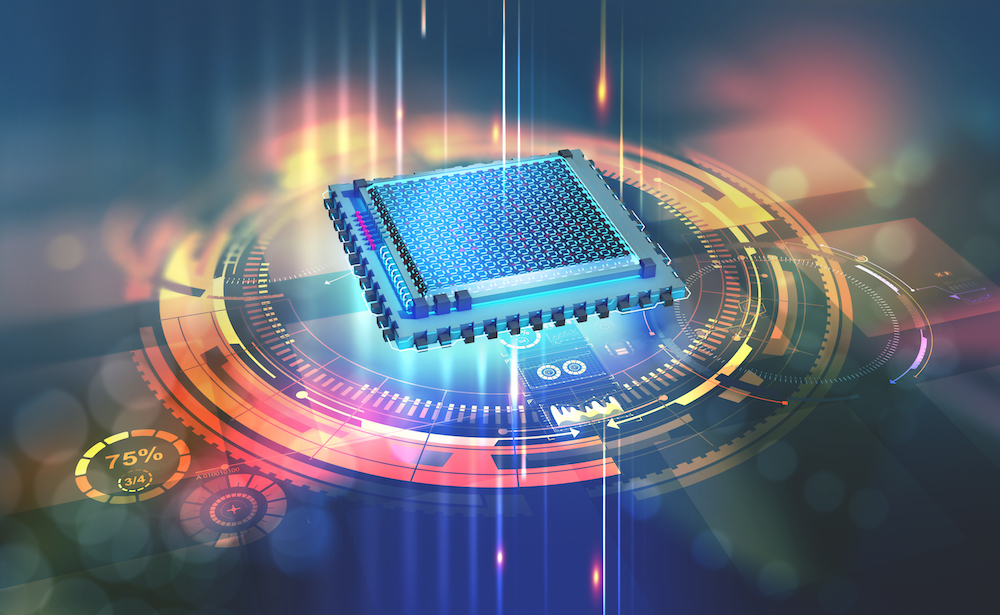
Quantum Computing
Quantum computing utilize the properties of quantum physics for storing data and for performing computations. It might be highly beneficial for some tasks where they might vastly outperform some of the best supercomputers. Classical computers, on the other hand, encode information in the form of bits that is in 0s and 1s. In a quantum computer, memory in the basic unit is a qubit or a quantum bit.
Qubits are created from physical systems, like the spin of the electron or photon orientation. The systems might be in a lot of different settings all at one time; a property called the quantum superposition. The qubits might also be inextricably associated together through a phenomenon known as quantum entanglement. The outcome is a series of qubits that represent different data at the same time.
For example, eight bits is sufficient for one classical computer for representing any number that ranges between 0 and 255. However, eight qubits are sufficient for one quantum computer to show each number lying between 0 and 255. Some entangled qubits might be sufficient to show more numbers than there is a number of atoms present in the universe.
It is where quantum computing gain an advantage over classical computers. In situations in which there are many possible combinations, quantum computers might consider them at the same time. Some of the examples involve trying to find the total prime factors of a large digit or to find the shortest route between two places.
How Do Quantum Computing Work?
Instead of the conventional bits, quantum computers utilize qubits. Rather than just being on or off, the qubits might also be in the position called “superposition.” This is the position where they are both on and off simultaneously or somewhere lying in the spectrum.
Bits are utilized for representing the information in the regular computers. The quantum computers are dependent on quantum bits, which are qubits that are also able to be made from one electron.
Unlike different transistors that might be either 0 or 1, the qubits might come as 0 and 1 at the same time. The capability of a qubits to get the superposition states in the form of different states at the same time, is a great capability in itself for quantum computers. Just like conventional computers, however, quantum computers may need a route for transferring quantum information between the distant seeming qubits, which represents a big experimental challenge.
Quantum computers might develop vast multi-dimensional spaces in which we can represent them with even massive issues. On the other hand, classical supercomputers do not hold this capability.
Algorithms that utilize quantum wave interference are utilized for finding solutions in space and then utilize them into the different forms that we are able to use and understand.
How To Utilize Them?
For some of the problems, supercomputers are not the ultimate solution. Until recently, we depended on supercomputers to solve the important issues. These are actually quite large classical computers, which are often with a multitude of classical GPU and CPU cores. However, supercomputers are not quite ideal at solving specific problem types that might seem easy. It is the reason why we may need quantum computers.
Larger versions of these issue types might not be solved well by powerful supercomputers due to the fact they do not hold the memory, to capacitate the multitude of combinations of actual life problems.
Supercomputers also have to analyze different combinations, one after another, that can require a long time to process.
Why Are These Computers Efficient?
For some decades, we have seen big companies in the IT sector like IBM who have involved actively in the development of quantum computer systems to solve the issues in new ways.
Quantum computers are able to utilize a big multidimensional space in which large issues can be represented. On the other hand, classical supercomputers are not able to do this.
Algorithms that utilize quantum wave interference are utilized to look for solutions in the space and then translate them back into the specific forms that we may use or understand.
Quantum Algorithms
A promising quantum algorithm example would be Grover’s search. For example, let’s say you want to locate an item from a long list containing N items. On a single classical computer, you will need to check half the total items on average, and in the worst-case scenario, you will have to check all the items.
Through Grover’s search algorithm, you are able to find the right item after you have checked roughly the root of N of those. It will represent the profound increase in efficiency and the time that is saved. For instance, if you needed to search for an item contained in a list of one trillion, and every item took one microsecond to be checked, then: A conventional computer will take around a week, while a quantum computer will take about a second to complete the search.
Advancing Computers
You don’t have to know the technicalities of these computers in order to avail their full benefits. However, the science that works behind them is quite interesting. It is because it shows a lot of advanced fields that come together in the play of quantum computers.
Given the amazing potential of computational resource of quantum computers, you may have the expectation for them to be massive. In fact, these are currently around the size of the domestic refrigerator with an added box the size of a wardrobe, which contains control electronics.
Final Word
Just like how bits are utilized in conventional computers, quantum computers utilize quantum bits or qubits to store information in the form of quantum. These have much better efficiency and performative function as compared to conventional computers, and these can be used to perform a variety of functions with massive data input in a given time simultaneously. This article highlighted the efficiency and the capability of quantum computing over conventional computing in today’s market.
